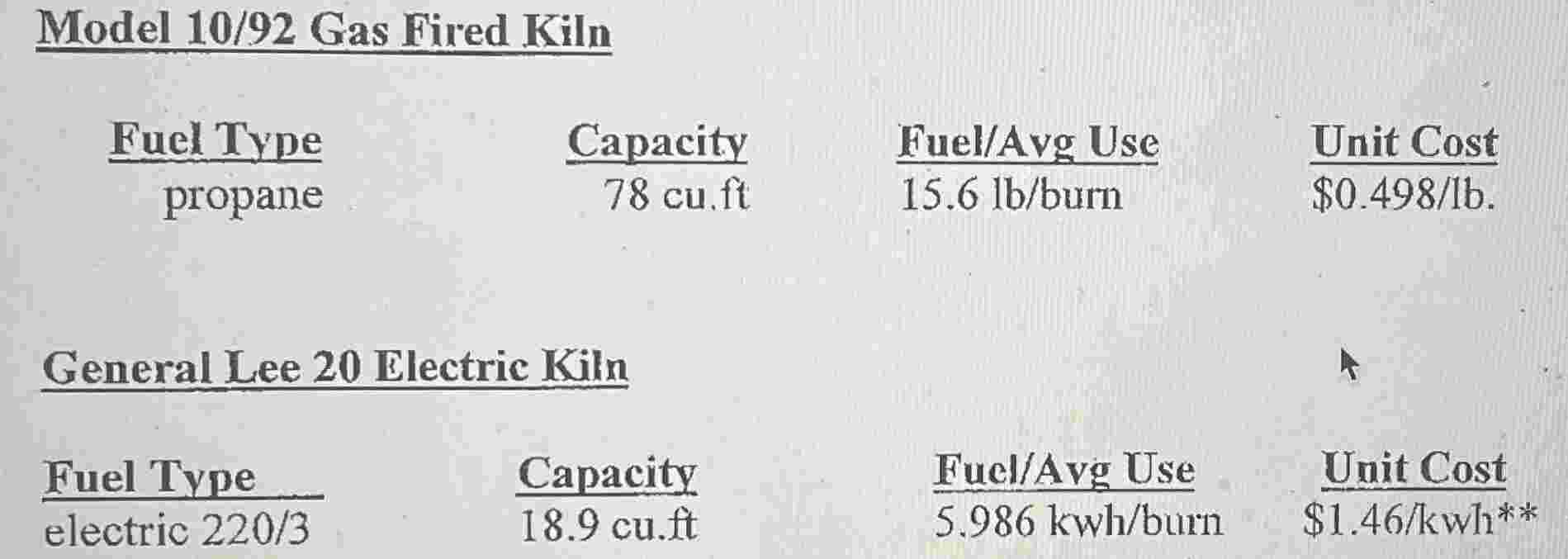Answered step by step
Verified Expert Solution
Question
1 Approved Answer
Gas fired kilns had nice features that offset the electric kilns' problems. For one thing the heat was much more uniform within the kiln, creating
Gas fired kilns had nice features that offset the electric kilns' problems. For one thing the heat was much more uniform within the kiln, creating more consistency of the product. Temperature control was easier, and quickly adjusted. Certain glazing colors were possible with fire that were not possible with electric heating. Gas kilns typically were available in a wider variety of sizes, and large production kilns could yield large quantities of product quickly. One of the best features of gas was that it was cheap to operate. One of Julian's fellow artists in Richmond said that he ran his cubic foot kiln for only $ per burn on average. The kiln was about a foot cube, with shelves inside for layering items. What Julian was considering was a bank of three units, each having a cubic foot capacity. Julian reasoned that small production runs could be handled by one or two kilns, but could also run all three for large jobs. The gas kilns were $ each a total investment of $ plus around $ for installation and expert testing. Julian figured that if he went to gas firing, he certainly wanted them to be as safe as possible. The same volume capacity could be accomplished with twelve electric units, costing $ each. The installation would only be $ for an industrial electric service. The balance sheet and income statement were made by an artist and not an accountant and are incorrect, can you correct them and awnser all questions Bentley Custom Ceramics
Income Statements Liabilities
Accounts Payable
Notes Payable
Total Liabilities
Owner's Equity
Bentley Capital
Total Liab. and Equity Exhibit Sales and Cost Projections.
Productivity and capacity assumed to be approximately the same for either project
electric units versus propane gas units
Project's useful life: years
year asset depreciation range ADR midpoint
Sales Projection: Additional $ per year $ per extra job on average
Total annual number of extra capacity firings per year over and above his current
production:
Incremental Cash Operating Expenses projections:
Cost of goods sold: $ more per year
No additional cartruck expense, professional fees, or office expenses
$ more in advertising per year
$ more insurance per year
$ more repair expense per year
Increase in interest expensc because of the loan Julian was unable to estimate this
cost
No change in rent still seven years left on ten year lease Higher utilities electric OR
gas which had to be estimated based on PTS data
Higher depreciation expense, because of the new equipment. Julian would get his
accountant to estimate this using the MACRS standard.
Supplies expense higher by $ per year
Wages expense higher by $ per yearEvaluate both alternatives using appropriate capital budgeting decision criteria.

Step by Step Solution
There are 3 Steps involved in it
Step: 1

Get Instant Access to Expert-Tailored Solutions
See step-by-step solutions with expert insights and AI powered tools for academic success
Step: 2

Step: 3

Ace Your Homework with AI
Get the answers you need in no time with our AI-driven, step-by-step assistance
Get Started


